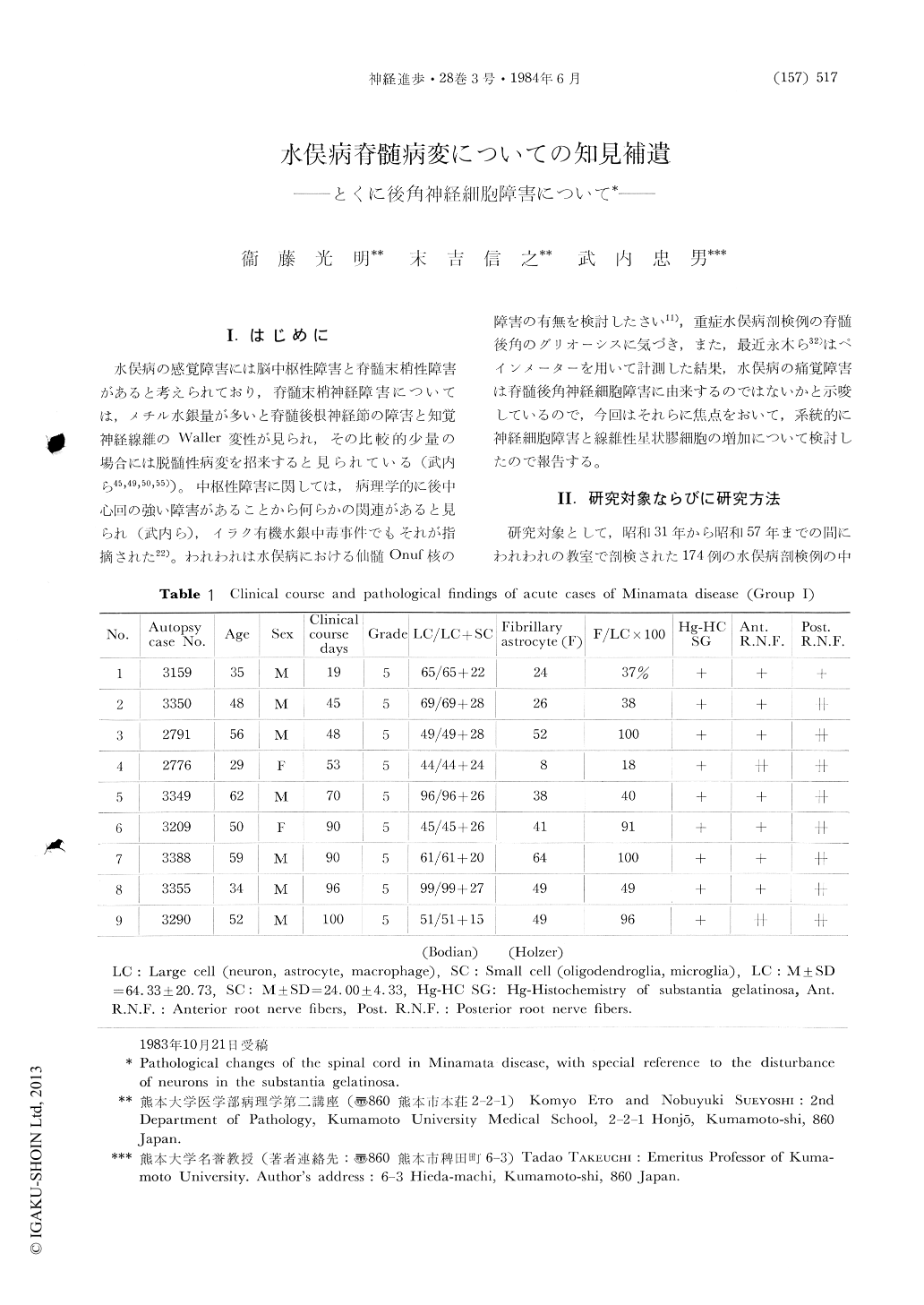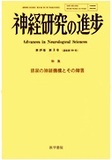Japanese
English
- 有料閲覧
- Abstract 文献概要
- 1ページ目 Look Inside
I.はじめに
水俣病の感覚障害には脳中枢性障害と脊髄末梢性障害があると考えられており,脊髄末梢神経障害については,メチル水銀量が多いと脊髄後根神経節の障害と知覚神経線維のWaller変性が見られ,その比較的少量の場合には脱髄性病変を招来すると見られている(武内ら45,49,50,55))。中枢性障害に関しては,病理学的に後中心回の強い障害があることから何らかの関連があると見られ(武内ら),イラク有機水銀中毒事件でもそれが指摘された22)。われわれは水俣病における仙髄Onuf核の障害の有無を検討したさい11),重症水俣病剖検例の脊髄後角のグリオーシスに気づき,また,最近永木ら32)はペインメーターを用いて計測した結果,水俣病の痛覚障害は脊髄後角神経細胞障害に由来するのではないかと示唆しているので,今回はそれらに焦点をおいて,系統的に神経細胞障害と線維性星状膠細胞の増加について検討したので報告する。
Abstract
In Minamata disease, although it was well known that the sensory disturbance resulted from the cerebro-central and peripheral disintergrations, it remains in question whether it also results from the disturbance of spinal cords.
The purpose of this paper was to clarify patho-logical changes of the spinal cord in this respect. Nine cases with acute onset that died within 100 days (Group 1), 3 cases with acute onset followed by serious and long-standing state, 26 cases with chronic onset (Group 2), and 18 cases of inhab-itants in mercury contaminated area and the control cases (Group 3) were studied.

Copyright © 1984, Igaku-Shoin Ltd. All rights reserved.


